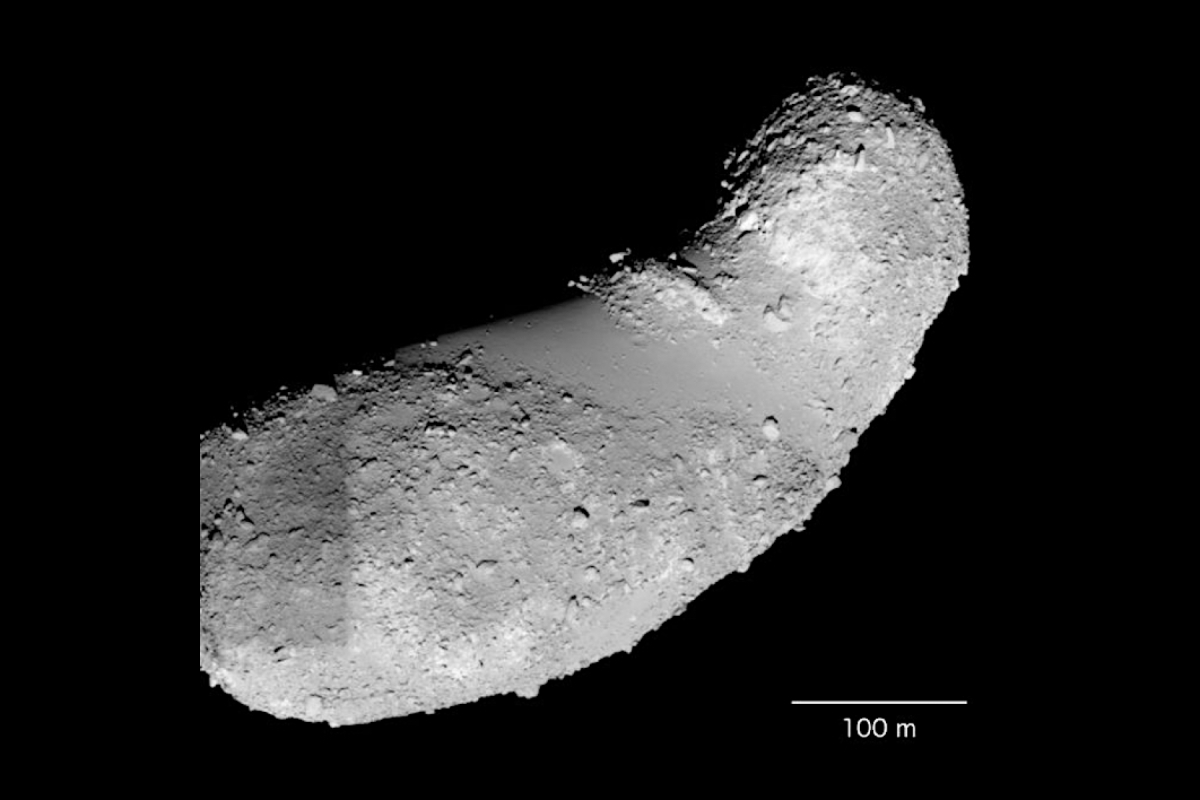Planetary Science Institute | 2018 Oct 25
JAXA’s (Japan Aerospace Exploration Agency’s) Hayabusa2 mission is on track to return samples from its target asteroid, 162173 Ryugu, a C-type Near Earth Asteroid (NEA). The past month has seen the successful deployment of two rovers and a lander. The mission focus is now on the successful retrieval and return of a surface sample.
- This image of asteroid Ryugu was taken with Hayabusa2's ONC-T (Optical Navigation Camera-Telescopic) on October 15, 2018 from an altitude of 42 meters. Image credit: JAXA, Tokyo University, Kochi University, Rikkyo University, Nagoya University, Chiba Institute of Technology, Meiji Univeristy, Aizu University, and AIST.
Two members of the Planetary Science Institute’s (PSI’s) science staff are on the Hayabusa2 science team as part of NASA’s Participating Scientist program, a cooperative effort between NASA and JAXA. Deborah Domingue is a member of both the Optical Navigation Camera (ONC) and Near Infrared Spectrometer (NIRS3) instrument teams. Lucille Le Corre is a Co-Investigator on the ONC team. Their focus, over the past several months, has been in support of data processing and analysis of Hayabusa2 data for landing site selection.
The Hayabusa2 engineering team’s safety constraints restrict where the spacecraft can safely touch down. These constrains include regions of 100 meter diameter with an average slope less than 30 degrees, boulder heights less than 50 centimeters, and an absolute temperature less than 370 degrees Kelvin (97 degrees Centigrade). This limited the selection to a region plus or minus 30 degrees from the equator. The challenge of the science team was to find a region of scientific interest that meet the engineering constraints.
The biggest hurdle seems to be finding regolith in a place that is comprised of boulders less then 50 centimeters, within a 100 meter diameter region. The lack of a powdered, fine-grain regolith on asteroid Ryugu will make it difficult for the Hayabusa2 spacecraft to collect a sample to be returned to Earth. ...



